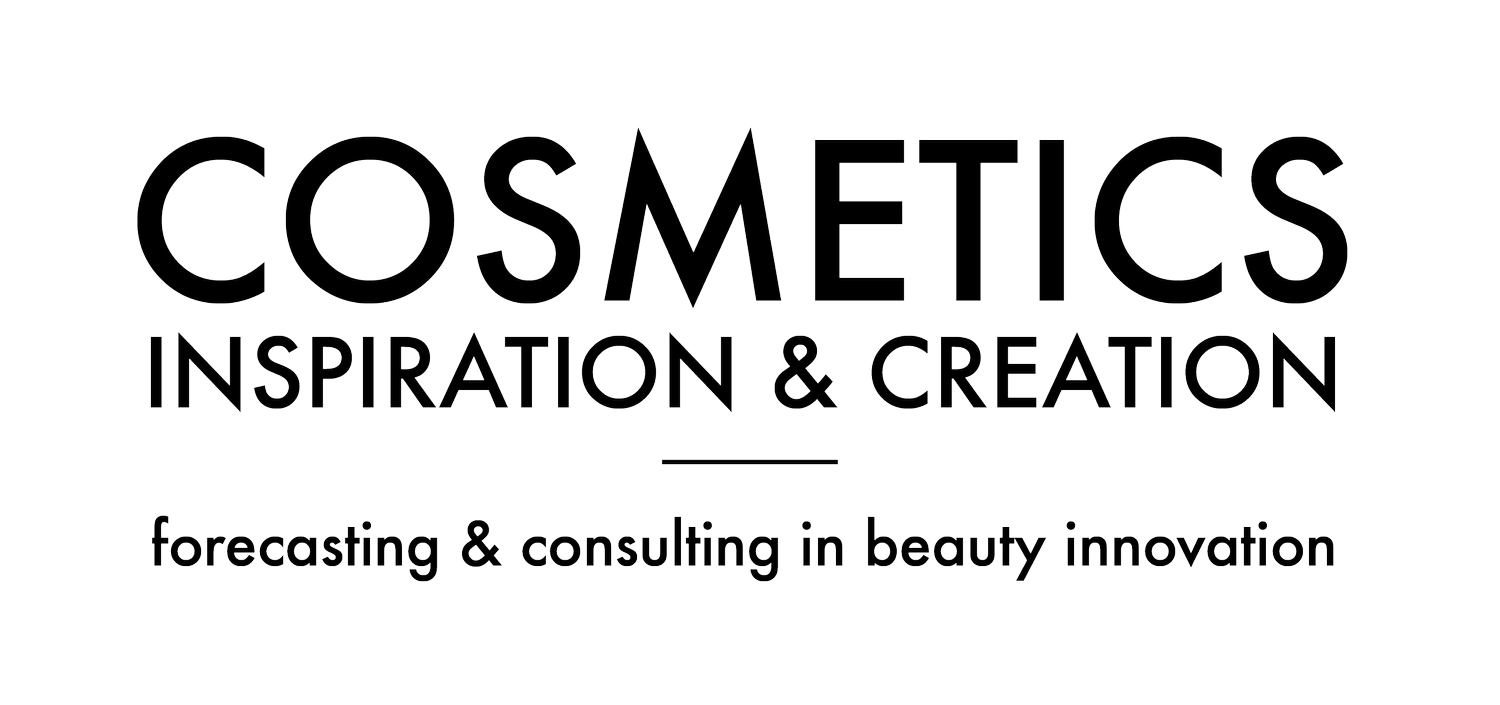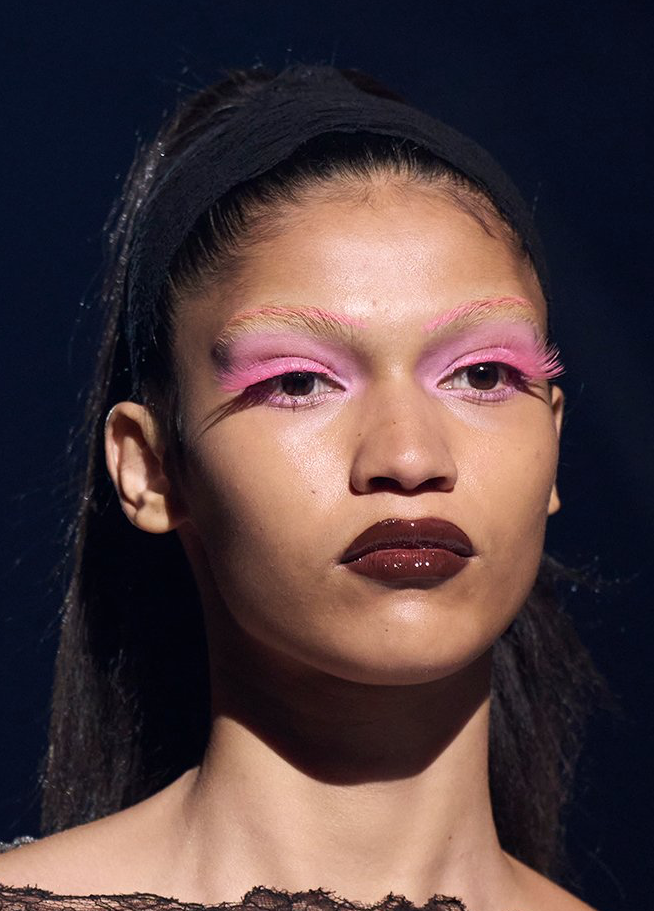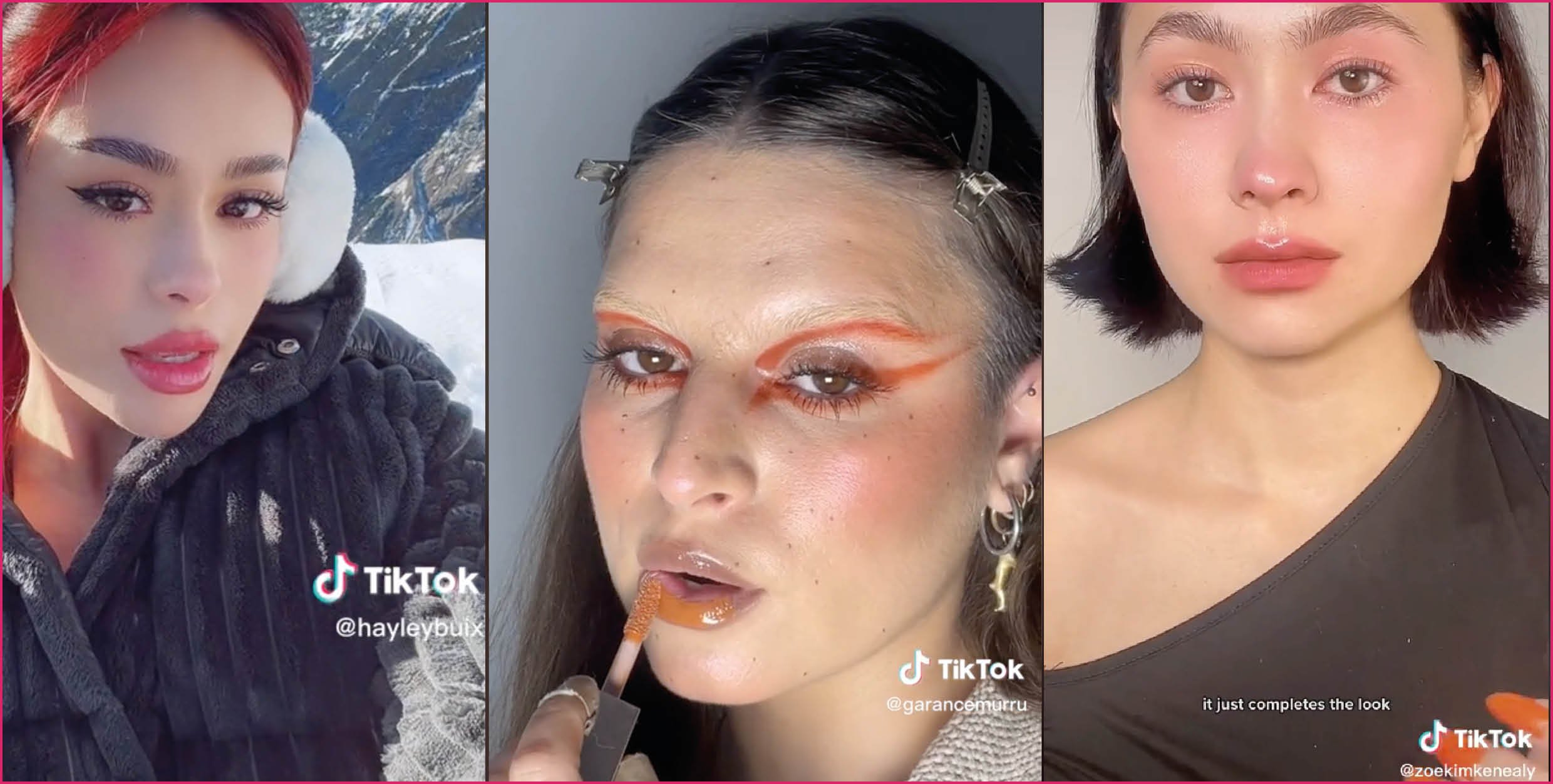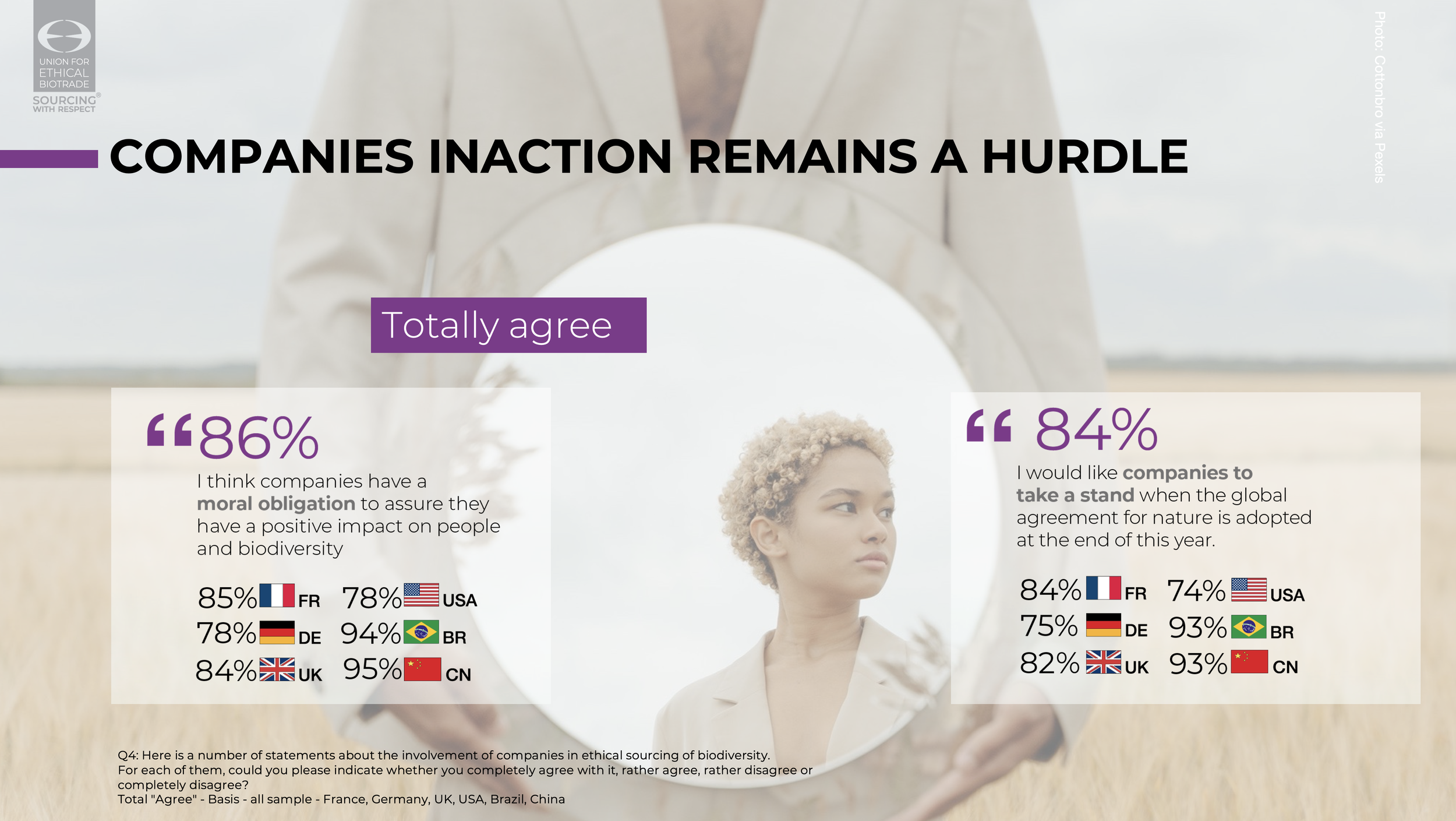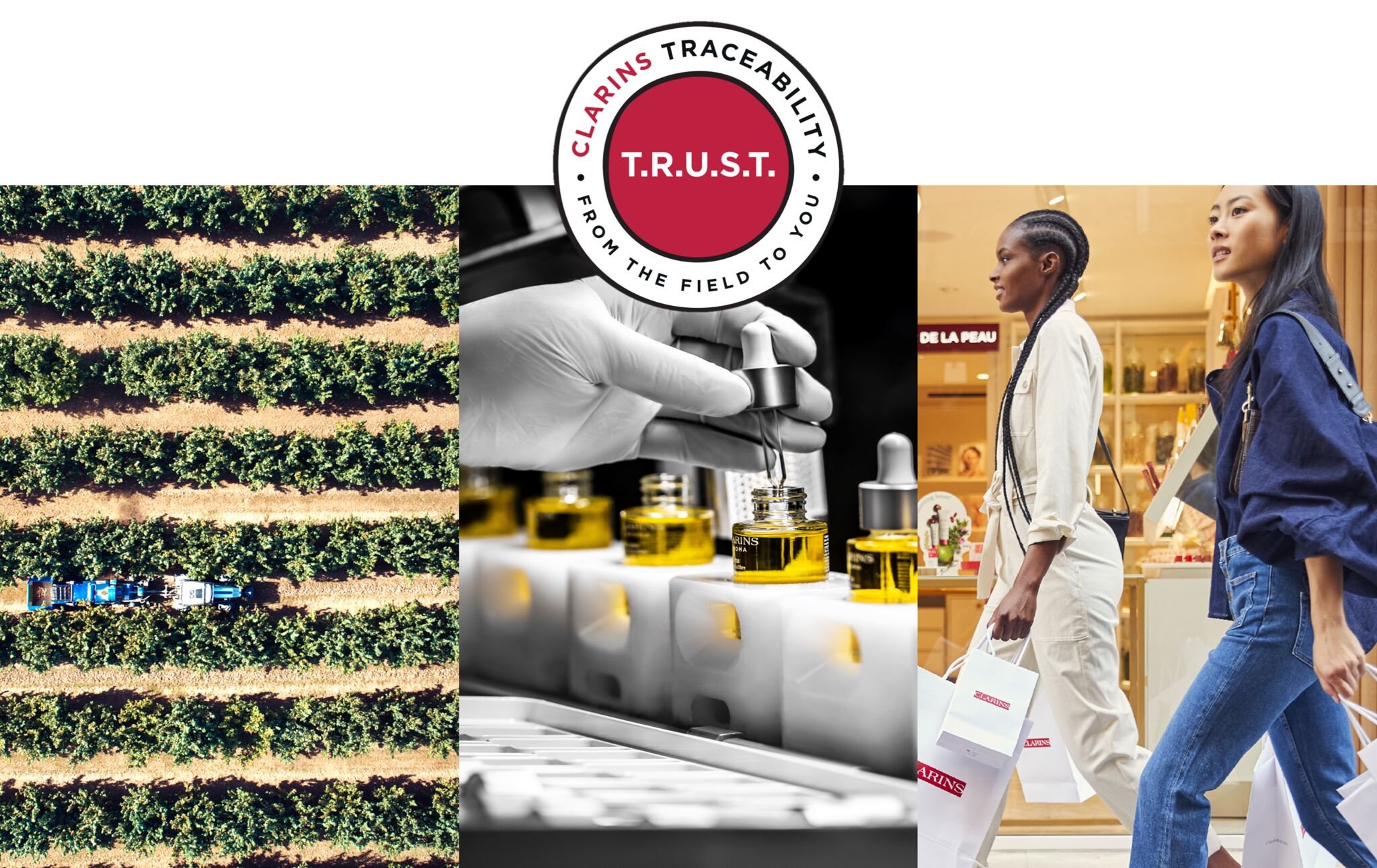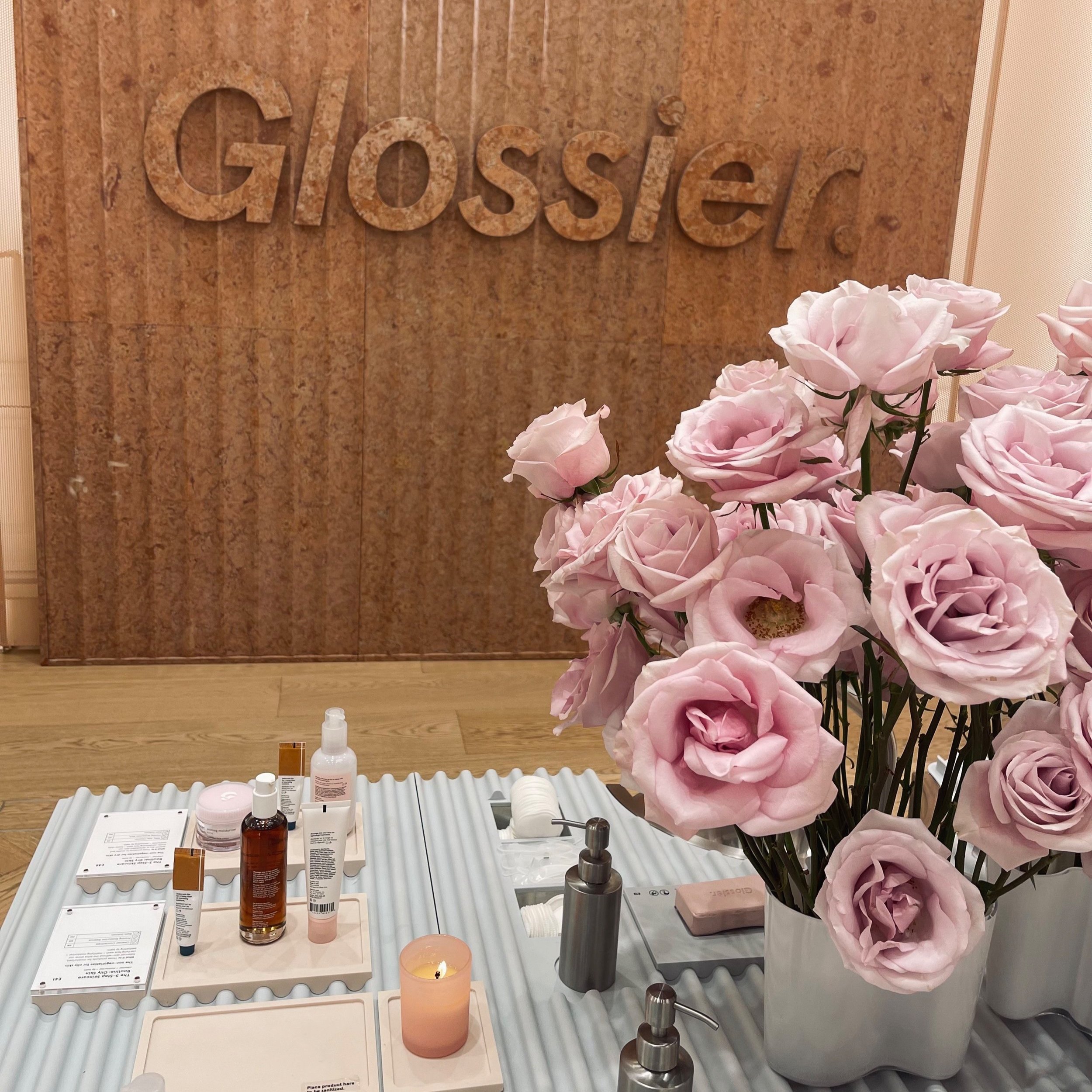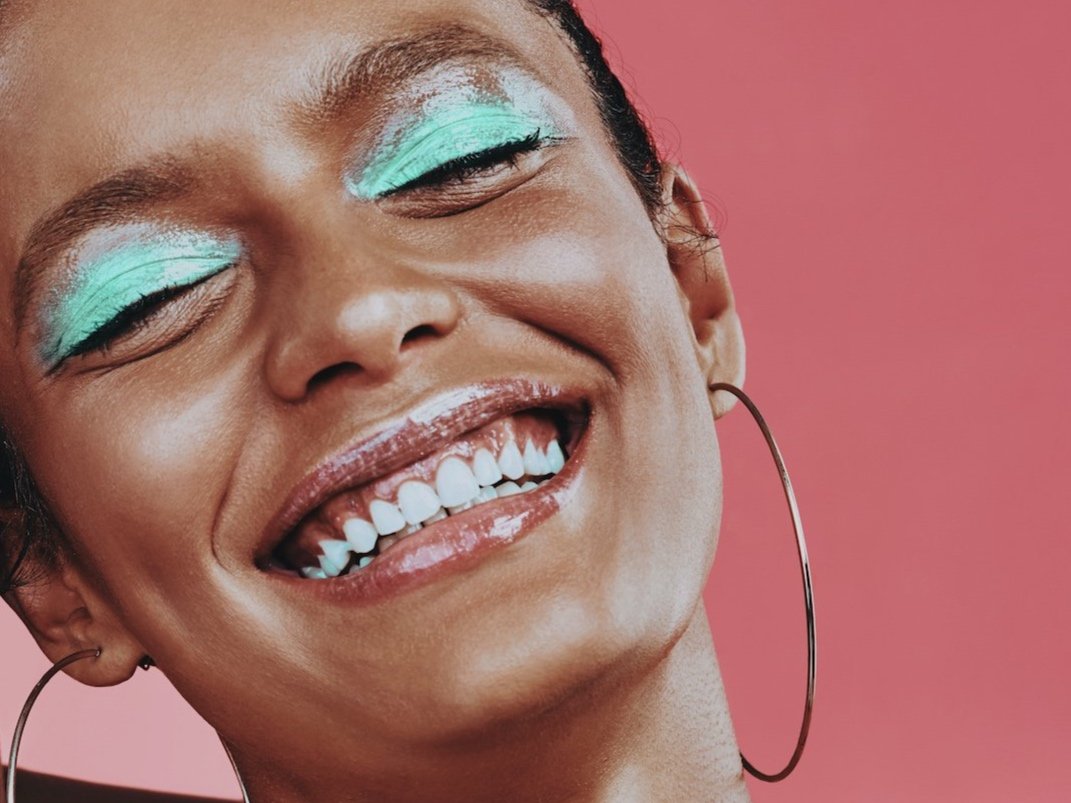At the recent Paris Couture shows, trending hair and makeup looks were given sophisticated status. From grown-up Gothic Allure to a sumptuous twist on Clean Girl, discover Cosmetics Inspiration & Creation’s edit of the 5 key hair and beauty trends to watch:
#1 - Vanilla Girl
Clean Girl continues to evolve into new territories of minimalism, and Couture week introduced the latest interpretation of the trend: Meet, Vanilla Girl.
Source: Schiaparelli - Vogue Runway
The warmer, cosier sister of Clean Girl has been gaining momentum on TikTok, where #vanillagirlmakeup currently has 20.7M views. As the name suggests, this is a more comfortable aesthetic, characterized by soft, buttery textures and neutral colours such as off-white, beige and cream. In Paris, Schiaparelli MUA Pat McGrath referenced the trend through candlelit skin, achieved using a soft matte base accented with a subtle rosy blush applied to the apples and up to the cheekbones. For the lips, a dewy pink balm completed the look.
#2 - The Return of The Side Fringe
In recent trend reports, CIC has tracked the growing influence of Kidult Beauty, as creators and consumers play with child-like aesthetics and references to create grown-up looks. This sense of childhood experimentalism seeped into Couture this season, where ultra-short and side-swept fringes evoked memories of self-inflicted home haircuts and early Noughties teen idols.
Source visual: Armani Privé - Vogue Runway
At Viktor & Rolf, super-short fringes echoed the collection’s overarching Surrealist theme. Hair stylist Olivier Schawalder played with proportion with styles that featured short and blunt fringes paired with sleek, slightly bouffant ponytails. On the front row at Schiaparelli, Kylie Jenner wore her bangs swept to the side and curved over one eye.
#3 - Gothic Allure
The influence of Wednesday Addams is far-reaching and for Couture, MUAs put a sophisticated spin on the glam-goth aesthetic, demonstrating its potential to appeal beyond Wednesday’s core Gen Z audience.
Source visual: Valentino - Julien Da Costa for Le Figaro
At Ronald van der Kemp, Marcello Costa referenced the classic goth aesthetic of matte white base and black lips but contemporized the look with bleached brows and a dramatic, smokey eye with shimmery red undertones. For Valentino, Pat McGrath looked to 80s Club Kids for inspiration with makeup looks that accentuated each model's individuality while playing to sub-culture themes. Many sported matte berry or black vinyl lips, heavily-lined eyes and a dramatic veil blush.
#4 - ‘20s Redux
Source visual: Dior - ELLE
Serving up references to the iconic women of the 1920s, Dior’s show was rich with sophisticated hair and beauty notes. Guido Palau created hairstyles from the Joséphine Baker school of kiss curl artistry, creating immaculately sculpted looks with not a hair out of place. Short styles were centre-parted and sleeked down, or hair was braided and pulled back into low buns. Even baby hairs were neatly incorporated into each style.
#5 - All that Brows
Source visual: Mugler - Vogue Runway
Special attention was given to brows and lashes, as MUAs distorted conventions to play with colour and textural expectations. Echoing the social media trend for “Anti-It Girl” aesthetics, disappearing or bleached brows continue to trend strongly and were spotted at Jean Paul Gaultier, Alexandre Vauthier and Valentino, among many others. The blanked-out brow was often offset by juxtaposing, lash and eye looks. At Mugler, neon liner hovered just above the brow and was colour-matched with extra-long lashes.
The CIC Take
TikTok’s influence is even being felt at Couture level. Key trends that have been buzzing on the platform are being reinterpreted with a luxury focus - from baby hair artistry to soft goth sophistication. Our latest trend report, Makeup Inspiration from the US: Beauty’s New Manifesto explores how TikTok is helping to change global beauty expectations. Discover the trends worth leaning into and the new territories to explore, by ordering your copy today.
